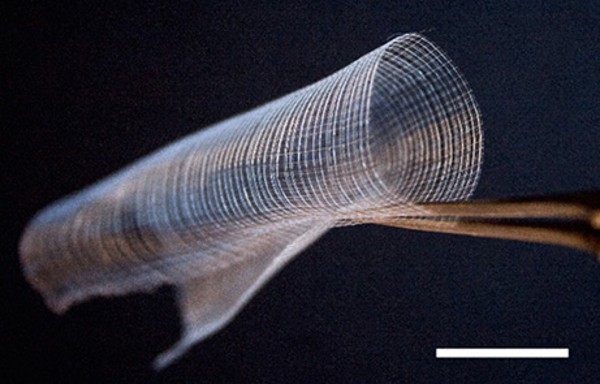
3D jet writer produces polymer structures that model the biological tissue cancer cells penetrate. (University of Michigan/Jacob Jordahl)
Research has shown that most cancer deaths happen because of how it spreads – or metastasises - in the body. A drawback for cancer treatment is not being able to experiment with metastasis and eliminate what causes it to spread.
Previous studies have used a 3D printer to recreate a controlled cancer environment, but these replicas are still not realistic enough for drug screening.
“We need a much finer resolution than what a 3D printer can create,” said Luis Solorio, an assistant professor of biomedical engineering at Purdue University in Indiana who worked on the project with researchers from the University of Michigan.
The team of researchers - led by Dr Jacob H. Jordahl in the lab of Prof Joerg Lahann at the University of Michigan - have proposed 3D writing instead of printing. The 3D jet writer acts like a 3D printer by producing polymer microtissues as they are shaped in the body, but on a smaller, more authentic scale with pore sizes large enough for cells to enter the polymer structure.
3D jet writing is a fine-tuned form of electrospinning, the process of using a charged syringe containing a polymer solution to draw out a fibre, and then deposit the fibre onto a plate to form a structure. This structure is a scaffold that facilitates cell activity.
Dr Jordahl's device has so far been used to write a structure that drew in cancer cells to sites in mice where cancer would not normally develop, confirming that the device could create a feasible cancer environment.
According to Purdue, Solorio’s other studies have increased cancer cells in human samples for better analysis and maintained receptors on these cells that drugs would need to find.
“Ideally, we could use our system as an unbiased drug screening platform where we could screen thousands of compounds, hopefully get data within a week, and get it back to a clinician so that it’s all within a relevant time frame,” Solorio said.
Initial findings have been published in Advanced Materials based on Solorio’s work as part of a team at the University of Michigan Biointerfaces Institute. He completed data analysis and writing while on faculty at Purdue.





Poll: Should the UK’s railways be renationalised?
If only the track is nationalised then it is an emasculated one with limited function and improvements will be focused on existing commuter and large...